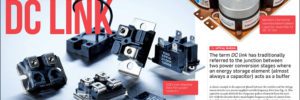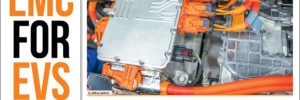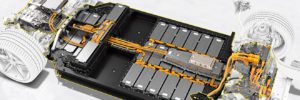
The term DC link has traditionally referred to the junction between two power conversion stages where an energy storage element (almost always a capacitor) acts as a buffer for each. A classic example is the capacitor placed between the rectifier and the voltage source inverter in a mains-supplied variable frequency drive (see Fig. 1). This… Read more »
Author: Jeffrey Jenkins
The technical challenges of bidirectional chargers

For years, we’ve been hearing about an EV technology that promises to be a game-changers: Vehicle-to-Grid (V2G) bidirectional charging. My recent work with one V2G charger developer, Fermata Energy, has convinced me that V2G has found its proverbial killer app: load peak shaving for commercial/industrial energy customers. This article is going to concentrate on the… Read more »
Specialized motor materials and constructions

When demand drives innovation, the state of the art can progress quite rapidly, but if the demand is not there yet, the end result is often the proverbial “solution in search of a problem.” One of the most prominent examples of this is the lithium-ion battery, which was developed in the 1970s, but didn’t really… Read more »
Here’s why Tesla transitioned to a semi-custom power module design in Model 3 inverter
![]()
A closer look at semiconductor packaging considerations in EVs One of the most critical decisions to be made at the earliest stage of designing a new power converter concerns the packages used for the semiconductors, as pretty much every other aspect of the design hinges on their physical form. This is especially true for the main… Read more »
EMC for EVs: Understanding electromagnetic compatibility

Engineers who design power electronics supplied by the mains have had to contend with meeting various electrical noise and safety standards for decades now, but their counterparts in the automotive industry were mostly free to do as they pleased. This was mainly because 12 V isn’t considered a shock hazard and cars are effectively rolling… Read more »
Why did Porsche go to the trouble of designing an 800 V Taycan EV?

How higher-voltage battery packs enable faster charging ecosystems Porsche took on a considerable engineering challenge when it decided to design an 800 V EV system for the Taycan, because nearly every other hybrid and EV in the world operates at 400 V or less. There simply was not a wide range of high-voltage off-the-shelf parts… Read more »
A closer look at advances in power PCBs

In just the last few years there have been some major improvements in printed circuit board technology that are especially relevant to power electronics. Arguably the most important of the recent advances is the development of new board substrates that can withstand higher temperatures, along with metal cores for improved heat transfer, and the ability… Read more »
A closer look at current sensors in EVs

Pretty much every electronic circuit that handles significant power utilizes some means of measuring current, whether to simply protect against overload or because it is a basic functional requirement. In this article we’ll cover some of the more common devices and circuit techniques for measuring current in the major subsystems of an EV, including when… Read more »
Opinion: SiC vs GaN semiconductors for EV power converters

Just as engineers are starting to get used to the advantages (and quirks) of silicon carbide (SiC ) devices, another semiconductor material joins the fray: gallium nitride, or GaN. Though there are some superficial similarities between these two materials, and even some overlap in their areas of best use, it is my opinion that only… Read more »
A closer look at the losses in power semiconductors

A previous article examined loss mechanisms in traction motors, which tend to be the single biggest source of losses in a modern EV drivetrain. This time, the focus is on the various power semiconductors, as they are the next biggest source of losses. Also covered in brief are ways to mitigate these losses and design… Read more »
